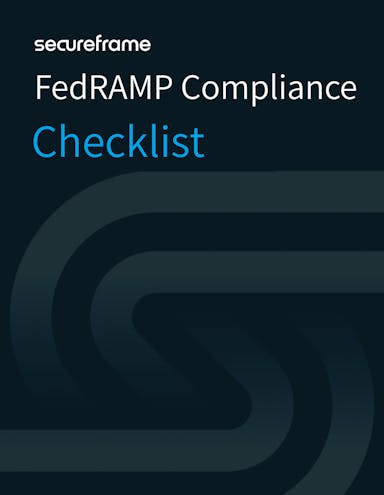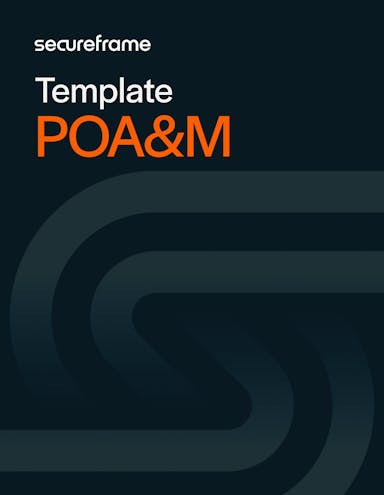
The Path to FedRAMP ATO in 2024: A Detailed Guide to the Agency Authorization Process
Emily Bonnie
Senior Content Marketing Manager
Rob Gutierrez
Senior Cybersecurity and Compliance Manager, CISA, CCSK, CMMC RP
Achieving FedRAMP compliance is essential for cloud service providers looking to do business with federal agencies. Not only does it open the door to a vast market of government clients, it also enhances your overall security posture, making your service more attractive to both public sector and private sector customers who prioritize best-in-class security practices.
At the heart of the FedRAMP compliance process is obtaining an Authority to Operate (ATO), a designation that your cloud product or service meets the rigorous security standards required for federal use.
In 2024, FedRAMP introduced significant changes to the authorization process, streamlining it into a single agency-driven pathway and replacing the Joint Authorization Board (JAB) with the FedRAMP Board. This shift simplifies the process while maintaining the high standards that FedRAMP is known for.
In this guide, we’ll walk you through the updated path to achieving a FedRAMP ATO, providing a detailed roadmap to help you navigate each step and set your service up for success.
What is an authority to operate (ATO)?
A FedRAMP Authority to Operate (ATO) is an official approval that allows a cloud service provider (CSP) to offer its services within the federal government’s networks. This approval is granted by a federal agency after the cloud service has completed a rigorous security assessment to ensure it meets FedRAMP’s stringent requirements. The ATO signifies that the cloud service is secure enough to handle sensitive government data and operate in the agency’s environment.
You can think of a FedRAMP ATO like a special, federal specific driver’s license for your cloud service. Just as you need to pass a driving test to prove you can safely operate a vehicle, your cloud service must pass a series of security checks to demonstrate it’s safe to use in a federal agency’s network.
Once your cloud service passes these checks, it receives an ATO — essentially the green light that says, “This service is secure and ready for use by the government.” However, just like a driver’s license, a FedRAMP ATO isn’t permanent. To maintain your authorized status, you must continuously monitor and update your service to ensure it stays compliant with FedRAMP’s security standards over time.
Recommended reading

FedRAMP: What It Is, Who Needs It, and Where to Start
2024 FedRAMP program updates: A single path to FedRAMP ATO
When FedRAMP was first established in 2011, the goal was to enable federal agencies to take advantage of the benefits of cloud computing while maintaining stringent cloud security standards. Initially, there were two possible paths to FedRAMP authorization: agency authorization or JAB authorization.
With a new roadmap released in March 2024, FedRAMP announced sweeping changes designed to modernize the program and address the evolving needs of both federal agencies and cloud service providers. These changes are designed to reduce the time and resources needed to achieve FedRAMP authorization as well as scale the FedRAMP PMO’s own internal processes to streamline their operations and grow the FedRAMP marketplace.
Here’s a summary of the important updates:
- Modernization of FedRAMP: The program is evolving to support the broader range of cloud services now in use, beyond basic infrastructure. This includes a focus on improving the process for SaaS applications, which are increasingly critical to federal operations.
- Efficiency and scalability: The changes are designed to reduce the time and cost associated with FedRAMP authorization, particularly for SaaS companies. By streamlining processes and automating more tasks, FedRAMP aims to scale its operations to accommodate more cloud offerings efficiently.
As a result, FedRAMP is moving towards a data-first, API-driven approach, with digital authorization packages that leverage automated validation and system integration. The program will also adopt a more flexible approach to managing changes, allowing for quicker updates to security requirements and processes without bogging down providers with bureaucratic hurdles. - Improved customer experience: FedRAMP is placing a strong emphasis on aligning its processes with the actual experiences of its customers—both cloud providers and federal agencies. The goal is to make the authorization process simpler and more transparent. FedRAMP will also work closely with trusted partners, such as the Department of Defense’s DISA, to increase the capacity for authorizations and reduce bottlenecks.
- Strengthened cybersecurity: While improving efficiency, FedRAMP is also committed to maintaining high security standards. The changes include clearer and more consistent security expectations and a focus on outcomes rather than rigid adherence to processes, as well as stronger alignment with stakeholders through surveys, pilots, and public forums to ensure that the changes are working as intended and allow for adjustments as needed.
In May 2024, the U.S. General Services Administration announced additional changes, replacing the Joint Authorization Board with the FedRAMP Board and offering a single path to FedRAMP ATO through agency authorization.
The Office of Management and Budget established the FedRAMP Board and appointed its inaugural members, which include CIOs from the Department of Homeland Security (DHS), Department of Defense (DoD), Department of Veterans Affairs, Department of the Air Force, Cybersecurity and Infrastructure Agency, Federal Deposit Insurance Corporation (FDIC), and the General Services Administration (GSA). The FedRAMP Board provides governance and oversight, setting the overall strategic direction for the FedRAMP program by developing and updating policies, standards, and guidelines that CSPs must follow to achieve and maintain FedRAMP compliance.
Phase 1: Preparation
Before diving into the full FedRAMP agency authorization process, thorough preparation is key to setting your cloud service up for success. A crucial part of this preparation is the formal readiness assessment report (RAR) conducted by a Third-Party Assessment Organization (3PAO).
While this step isn’t strictly required, it is strongly recommended by the FedRAMP Program Management Office (PMO) and can make a significant difference in your journey toward achieving an ATO.
Let’s explore what the readiness assessment entails, how it helps identify and address potential gaps in your security posture, and why investing in this early step can streamline the entire authorization process and improve your chances of success.
Complete a Readiness Assessment Report (RAR)
CSPs work with a FedRAMP-recognized 3PAO to complete a readiness assessment before submitting their CSP Information Form to the FedRAMP PMO.
The 3PAO begins the readiness assessment by reviewing the CSP’s security documentation, including the System Security Plan (SSP). This document outlines the security controls the CSPs has implemented and how they are monitored and maintained, which helps the 3PAO understand the current security posture and how it aligns with FedRAMP requirements.
The 3PAO will then perform a gap analysis to identify any discrepancies between the CSP’s current security practices and FedRAMP requirements, identifying any areas where the CSP may need to strengthen or implement additional controls. They will also test security controls against the applicable FedRAMP baseline (Low, Moderate, or High impact level) to assess whether controls are adequately implemented and effective.
After completing the review, the 3PAO prepares the Readiness Assessment Report (RAR). This report summarizes findings, including the CSP’s strengths, identified gaps, and recommendations for improvement. The CSP will use the RAR to understand what actions they need to take to prepare for the full FedRAMP authorization process, as well as create a Plan of Actions and Milestones (POA&M). This document outlines in detail how the CSP will address and mitigate any risks identified during the assessment, along with a timeline for completing these actions.
If the 3PAO determines that the CSP is already sufficiently prepared, they can recommend the CSP for FedRAMP Ready status. The FedRAMP PMO reviews RARs within one business week, and either issues remediation requirements if necessary or awards the CSO FedRAMP Ready status on the FedRAMP Marketplace.

FedRAMP Compliance Checklist
This step-by-step checklist will walk you through the process of preparing for FedRAMP authorization.
Phase 2: Pre-Authorization
During this phase, the federal agency and CSP work closely to outline the scope of the project, develop a comprehensive plan for the authorization process, and align on expectations and responsibilities. This preparation lays a solid foundation for a smoother, more efficient authorization journey.
Formalize agency partnership
In the pre-authorization phase, the CSP and a federal agency establish a formal partnership to navigate the FedRAMP process together. This critical stage involves not just an agreement to pursue authorization, but also a collaborative effort to meticulously plan and prepare for the ATO process.
Formalizing the partnership involves several key steps:
1. Submit a completed In Process Request and Work Breakdown Structure to the FedRAMP PMO
CSPs must secure written confirmation from a federal agency that indicates the agency’s intent to partner on a FedRAMP authorization. This confirmation is documented through an In Process Request (IPR), which serves as formal notice to the FedRAMP PMO that the federal agency and CSP are initiating the FedRAMP authorization process.
To officially start the FedRAMP In Process designation, the FedRAMP PMO requires an email or letter from, or including, an Agency Authorizing Official (AO) that details the following:
- The name of the CSP
- The name of the Cloud Service Offering (CSO)
- The impact level (e.g., Low, Moderate, or High) at which the agency intends to authorize the service
- Points of contact from both the agency and CSP who will coordinate with FedRAMP during the authorization process
- Confirmation that a full Third-Party Assessment Organization (3PAO) assessment is scheduled to begin within six months of the In Process Request, including the exact start date if available
- An attestation from the partnering agency that they are actively working with the CSP to achieve an ATO within 12 months of the In Process designation
Additionally, CSPs must collaborate with their agency partner and 3PAO to develop a Work Breakdown Structure (WBS) and submit it to the FedRAMP PMO before receiving the In Process designation. The WBS is a crucial document that outlines the timeline for the assessment and the 12-month ATO requirement. It also provides shared visibility into the key milestones of the project, helping all parties stay aligned and on track.
The FedRAMP PMO provides a WBS template to CSPs and agencies at the start of the CSP intake process or when an In Process Request email is submitted to the PMO.
2. Confirm the system is fully operational
The FedRAMP PMO defines “fully operational” as being in a production environment and ready for assessment.
3. Fulfill at least one of four additional requirements:
To move forward in the FedRAMP agency authorization process, the CSP must meet at least one of the following criteria. These additional requirements help ensure that the service offering is not only ready but also actively engaged in the process with a clear path towards authorization.
- The agency provides proof of a contract award for the use of the CSO.
- The agency and CSP demonstrate use of the service offering to the PMO. (An email from the Agency Authorizing Official confirming that the instance of the CSO undergoing authorization is being used by the agency will satisfy this requirement.)
- The CSO is currently listed as FedRAMP Ready on the Marketplace.
- Completion of a formal FedRAMP-facilitated Kickoff Meeting that includes the agency, CSP, FedRAMP PMO, and, if applicable, the 3PAO.
Determine the applicable security categorization
A key step in preparing for the FedRAMP authorization process is determining the appropriate data security categorization for the CSP’s system. This involves consulting NIST 800-60 Vol 2 Rev 1 and completing a Federal Information Processing Standards (FIPS) 199 Categorization form. This step is crucial as it categorizes the system based on the types of information it processes, stores, or transmits, setting the foundation for the security requirements that must be met.
Once the categorization is established, the CSP makes any necessary technical and procedural adjustments to align with federal security standards. This preparation includes refining the system’s security controls and compiling the required security documentation needed for the authorization process.
Submit a CPS Information Form
Next, the CSP must complete and submit a FedRAMP CSP Information Form. This comprehensive 14-page questionnaire collects essential data about your service, including its architecture, security controls, and compliance with relevant standards. It covers various aspects of your CSO, such as the types of data it processes, the technical environment, existing security measures, and how the system meets federal security requirements.
Once filled out, the CSP Intake Form is submitted to the FedRAMP PMO, where it serves as the foundation for subsequent evaluations and planning. The details captured in this form help the PMO understand your service’s capabilities and potential risks, allowing them to offer guidance on the best path forward.
Conduct a kickoff meeting
The Kickoff Meeting marks the official start of the FedRAMP agency authorization process, serving as a critical opportunity to bring together all key stakeholders, introduce team members, and ensure everyone is aligned on the path forward.
The Kickoff Meeting typically lasts 60-90 minutes, during which the CSP and agency discuss:
- The background, functionality, and purpose of the Cloud Service Offering (CSO).
- The technical security aspects of the cloud service, including system architecture, authorization boundary, data flows, and core security capabilities.
- Customer-responsible controls that the agency must implement and test.
- Any compliance gaps identified, along with plans for remediation.
- The work breakdown structure, key milestones, and next steps in the authorization process.
- A comprehensive overview of the authorization process, including milestones, deliverables, roles and responsibilities, and the project timeline.
- The specific roles and responsibilities of all project team members, including those from the federal agency, CSP, and 3PAO.
- Federal agency-specific requirements and any areas where the agency may need to accept certain risks.
- The process the federal agency will follow to review the authorization package and make a risk-based authorization decision.
- The FedRAMP PMO’s approach to reviewing the authorization package with a focus on government-wide reuse.
The FedRAMP PMO provides an Agency Authorization Playbook that offers a step-by-step breakdown of what to expect before and during the Kickoff Meeting.
After completing this stage, the CSO’s FedRAMP Marketplace designation will be updated from "Ready" to "In Progress," signifying a key milestone in the journey toward full authorization.
Phase 3: Authorization
During the authorization phase, your cloud service undergoes a rigorous evaluation to ensure it meets the stringent security requirements necessary for federal use. This phase involves two major components: the full security assessment and the review of the security authorization package.
Let’s dive into each step of the authorization phase to get insights into what to expect and how to navigate this complex but essential step of the FedRAMP process.
Undergo a full security assessment
After the CSO achieves FedRAMP Ready status, the CSP proceeds with the full security assessment.
The 3PAO develops a Security Assessment Plan (SAP), which outlines the specific procedures and methodologies that will be used during the security assessment. It includes the scope of the assessment, testing strategies, and the timeline for completion, ensuring that the evaluation is thorough and aligned with FedRAMP requirements. The SAP must be agreed upon by the assessor and assessee.
Next, the 3PAO assessors conduct an independent security assessment, which includes testing the CSP’s security controls, validating vulnerability scans, and performing penetration testing. After the assessment, the 3PAO produces a Security Assessment Report (SAR), which documents the results, highlights any identified vulnerabilities, and provides a recommendation regarding FedRAMP authorization.
Using the SAR, the CSP then updates their Plan of Action and Milestones (POA&M). All of these documents — the SSP, SAP, SAR, and POA&M — must be completed using FedRAMP templates and submitted together as part of a security authorization package. This package is then reviewed by the federal agency to determine whether the CSO can be granted an Agency ATO.
Complete an agency authorization
In this step, the federal agency thoroughly reviews the security authorization package, which may include a debriefing on the Security Assessment Report. Based on the review’s findings, the CSP may need to perform remediation to address any identified risks or issues.
During this phase, the agency has the option to implement, document, and test the customer-responsible controls. They may also choose to complete these steps after issuing the ATO.
The agency then conducts a risk analysis, evaluates the residual risks, and makes a decision to issue an ATO based on their risk tolerance. Once the agency decides to issue an ATO, the following steps occur to finalize the process:
- The CSP uploads the Authorization Package Checklist and the complete security package to FedRAMP’s secure repository.
- The 3PAO uploads all security assessment materials, including the SAP and SAR, to FedRAMP’s secure repository.
- The FedRAMP PMO reviews the security assessment materials. Once approved, the CSP’s listing on the FedRAMP Marketplace is updated to reflect its new FedRAMP Authorized status, along with the date of authorization.
- The complete CSO security package is made available to other agency information security personnel, enabling them to issue subsequent ATOs by completing the FedRAMP Package Access Request Form.

Phase 4: Continuous monitoring
The post-authorization phase is crucial for maintaining the CSO’s security and FedRAMP compliance, and involves continuous monitoring (ConMon) and the ongoing management of security risks. The PMO provides a Continuous Monitoring Strategy Guide for this phase on FedRAMP.gov.
ConMon deliverables
During the continuous monitoring phase, the CSP must regularly submit ConMon deliverables on a monthly basis to all agency customers, including vulnerability scans, updated POA&M documents, annual security assessments, incident reports, and significant change requests.
CSPs utilize the FedRAMP secure repository to post these monthly and annual ConMon deliverables, ensuring that agency representatives have easy access to the most up-to-date information. Agencies review these deliverables to ensure that the CSO continues to monitor and manage risks and meet their security requirements.
POA&M maintenance
Maintaining the POA&M is an integral part of the post-authorization phase. The POA&M is a living document that should be regularly updated to reflect the current status of security risks and remediation efforts. CSPs must work closely with their agency partners to ensure that all identified vulnerabilities are addressed in a timely manner and that the POA&M accurately reflects the current risk posture of the CSO.

Plan of Action and Milestones (POA&M) Template
Use this template to demonstrate ongoing efforts to achieve and maintain federal compliance to third-party assessors.
Annual assessments
Annual security assessments are another critical component of the post-authorization phase. These assessments are conducted by the CSP in conjunction with a 3PAO to ensure that the CSO continues to meet FedRAMP’s security requirements. The annual assessment typically includes a thorough review of the security controls, updated vulnerability scans, and any significant changes made to the system over the past year.
Get FedRAMP ready faster with Secureframe
Achieving FedRAMP compliance is a rigorous process that demands substantial time and resources. You'll need to perform a gap analysis and readiness assessment, establish your baseline and authorization boundary, select and implement the appropriate NIST 800-53 controls, and gather all necessary documentation and evidence for your 3PAO. Even after these steps, maintaining compliance requires ongoing assessments and continuous monitoring.
While there are strict requirements around using non-FedRAMP authorized vendors and handling FedRAMP metadata within a FedRAMP boundary as opposed to non-FedRAMP authorized tools, GRC automation platforms like Secureframe can help reduce the time and effort needed to manage manual compliance tasks and get audit ready, allowing your team to focus on strategic priorities.
Here’s why organizations choose us as their trusted partner for achieving and maintaining compliance with federal frameworks:
- Expertise in government and federal compliance: Our dedicated, world-class compliance team includes former FISMA, FedRAMP, and CMMC auditors, offering the expertise and experience you need at every stage of the process.
- Seamless integrations with federal cloud products: Secureframe integrates with your existing tech stack, including AWS GovCloud, to automate infrastructure monitoring and evidence collection.
- Trusted 3PAO partner network: We have strong partnerships with certified Third Party Assessment Organizations like Schellman and Prescient Assurance, providing support for FedRAMP and other federal audits such as CMMC and CJIS.
Discover how we can help you comply with FedRAMP and other federal frameworks by scheduling a demo with a product expert.
Use trust to accelerate growth
FAQs
What does FedRAMP stand for?
FedRAMP stands for the Federal Risk and Authorization Management Program, a U.S. government-wide program that provides a standardized approach to security assessment, authorization, and continuous monitoring for cloud products and services. FedRAMP ensures that cloud services used by government agencies meet strict security requirements, helping to protect sensitive government data.
What is ATO in FedRAMP?
In FedRAMP, an Authority to Operate (ATO) is a formal approval granted by a federal agency or the Joint Authorization Board (JAB), allowing a cloud service provider (CSP) to operate within the federal government's environment. The ATO signifies that the cloud service has met all the necessary security controls and risk management requirements as defined by FedRAMP, ensuring it is safe for use with federal information systems.
How long does the ATO process take?
The time it takes to obtain an Authority to Operate (ATO) can vary significantly depending on several factors, including the complexity of the Cloud Service Offering, the level of preparedness of the Cloud Service Provider, and the specific requirements of the federal agency involved. Generally, the ATO process can take anywhere from 12 to 18 months or more. This timeline includes initial preparation, security assessments, documentation, and the review process.
What is the ATO process?
The Authority to Operate (ATO) process is a formal procedure that a Cloud Service Provider (CSP) must undergo to receive authorization from a federal agency to operate a Cloud Service Offering (CSO) within the agency's network. It involves a readiness assessment, full security assessment, remediation, submission of a Security Authorization Package, agency review, issuance of the ATO, and continuous monitoring.

Emily Bonnie
Senior Content Marketing Manager
Emily Bonnie is a seasoned digital marketing strategist with over ten years of experience creating content that attracts, engages, and converts for leading SaaS companies. At Secureframe, she helps demystify complex governance, risk, and compliance (GRC) topics, turning technical frameworks and regulations into accessible, actionable guidance. Her work aims to empower organizations of all sizes to strengthen their security posture, streamline compliance, and build lasting trust with customers.

Rob Gutierrez
Senior Cybersecurity and Compliance Manager, CISA, CCSK, CMMC RP
Rob Gutierrez is an information security leader with nearly a decade of experience in GRC, IT audit, cybersecurity, FedRAMP, cloud, and supply chain assessments. As a former auditor and security consultant, Rob performed and managed CMMC, FedRAMP, FISMA, and other security and regulatory audits. At Secureframe, he’s helped hundreds of customers achieve compliance with federal and commercial frameworks, including NIST 800-171, NIST 800-53, FedRAMP, CMMC, SOC 2, and ISO 27001.
